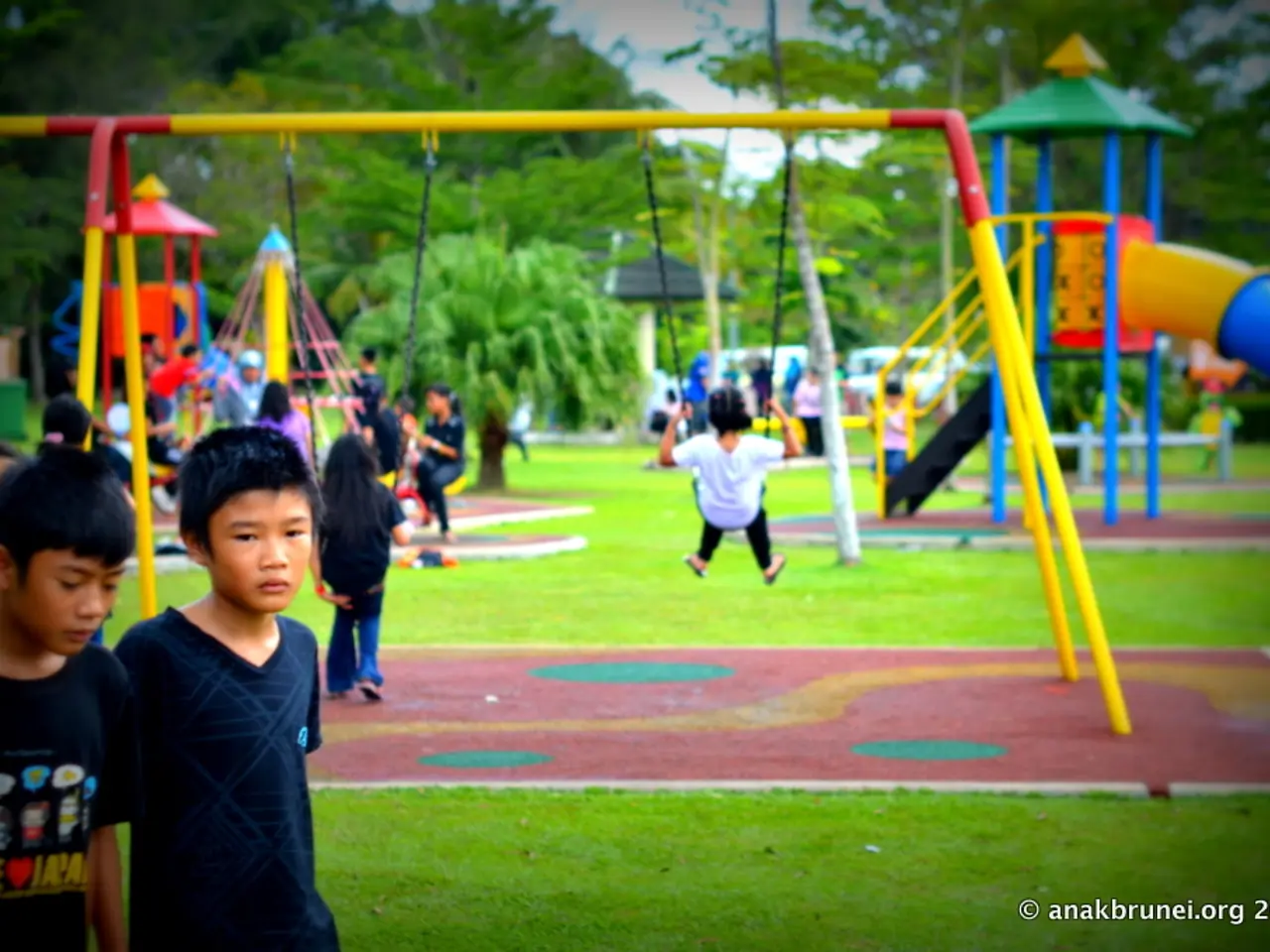Outdoor Adventure Guide for Children: The Thrilling Expedition through Nature
Nature Scavenger Hunts: A Fun and Educational Outdoor Adventure
Nature scavenger hunts are a great way to get children engaged with the outdoors while teaching them about the natural world. Here are some tips and ideas for age-appropriate nature scavenger hunts.
For Toddlers (ages 1-3):
Focus on simple, sensory-rich items that toddlers can easily recognize, such as a smooth rock, a green leaf, something fuzzy (e.g., moss), a flower, a stick, or something colorful like a red leaf or flower. Include easy, tactile items and encourage stomping in puddles or touching bark to engage their senses.
For Preschoolers (ages 3-5):
Add slightly more variety and observation challenges, such as a spider’s web (outdoors), a feather, a dandelion, a seed pod, an ant, and animal footprints. Use simple instructions and allow collecting safe items like leaves or tracing leaf shapes at home. Include playful elements like spotting shadows or splashing in puddles.
For School-age Children (ages 6-12):
Create a more detailed list with opportunities for identification and creativity, such as different leaf shapes, pinecones, animal tracks, something that smells interesting, insect spotting (butterflies, ants), a smooth rock, colors and textures (something fuzzy, something red), and bonus challenges like drawing or writing about found items. Encourage using magnifying glasses or binoculars.
For Tweens (ages 10-12):
Design scavenger hunts that combine nature exploration with critical thinking and creativity, such as finding and identifying plants or flowers by name, spotting bird species or animal signs, finding and researching unusual natural items (e.g., a seed pod or spider web), taking photos or notes about their finds, and incorporating trivia or clues that require some research or problem-solving. These activities can be tied to environmental education or seasonal changes.
General Tips for Nature Scavenger Hunts:
- Supervise children near water during a nature scavenger hunt. Teach children to identify harmful plants (poison ivy, oak, sumac) during a nature scavenger hunt.
- Clean up plus one during a nature scavenger hunt, bringing a small bag to collect your trash plus one additional piece found. Stay on trails during a nature scavenger hunt to respect designated paths and prevent erosion.
- Dress appropriately for the weather and terrain. Apply sunscreen and insect repellent before starting a nature scavenger hunt.
- Establish a meeting point if groups separate during a nature scavenger hunt. Bring water to stay hydrated during a nature scavenger hunt.
- Have a backup plan for a nature scavenger hunt in case of bad weather.
- Use themed hunts (colors, shapes, seasons) for a nature scavenger hunt.
- Incorporate storytelling or imaginative elements into a nature scavenger hunt. Create a matching game using photos or drawings of items discovered during your scavenger hunt.
- Bring a basic first aid kit during a nature scavenger hunt. Check for ticks after woodland nature scavenger hunts.
- Nature scavenger hunts can evolve to include more sophisticated challenges for older children. Observe gently during a nature scavenger hunt, looking at insects, small animals, and delicate plants without disturbing them.
- Use collected items to create beautiful artwork that showcases the colors, textures, and shapes found in nature. Let children lead and make discoveries during a nature scavenger hunt.
- Bring magnifying glasses for closer examination during a nature scavenger hunt. End a nature scavenger hunt with a nature-inspired craft or story circle.
- Turn a nature scavenger hunt into a friendly competition with small prizes. Take photos, not specimens, during a nature scavenger hunt.
- Nature scavenger hunts can be done in urban environments, focusing on city parks, street trees, community gardens, or even plant life growing through sidewalk cracks. Take breaks for snacks and rest during a nature scavenger hunt.
- Scientific investigation nature scavenger hunts involve collecting data and making observations like real naturalists. Create a nature journal where children can document their discoveries, press flowers, attach leaf rubbings, and write about their observations.
- Ask open-ended questions about findings during a nature scavenger hunt.
References:
[1] Outdoor Family [2] National Wildlife Federation [3] Kids Activities Blog [4] The Spruce Crafts [5] Parents
- Engaging in mindfulness exercises can help enhance the learning experience in nature scavenger hunts, promoting personal growth and a deeper connection with the natural world.
- Nature scavenger hunts can also be a great opportunity for lifelong learning, as they provide opportunities to learn about various aspects of nature, such as wildlife, plants, and geology.
- Implementing mindfulness and learning in home-and-garden settings can be an effective way to foster relationships with children and help them understand the importance of outdoor living and environmental conservation.
- To further promote education and self-development, consider incorporating outdoor living activities and nature scavenger hunts into various subjects, such as science, art, or even mathematics.




